Jitendra Kothari, Bollywood News Service in Mumbai
Here's looking at Rajesh Khanna's iconic rise to success, and after.
The day Rajesh Khanna passed away, the heavens opened up over Mumbai and the city was drenched in a downpour. This kind of cosmic symbolism would not have been out of place in a crowd-pleasing Rajesh Khanna melodrama from his halcyon days.
But whether the heavens were crying or not, there were indeed innumerable wet eyes that greeted the demise of Hindi cinema's foremost romantic. People across a wide swath of age groups had lost their definitive superstar.
The actor who had memorably tugged at our heartstrings by depicting death oh-so-feelingly in a remarkably long list of films -- Aradhana, Anand, Safar, Roti, Aap Ki Kasam -- was not play acting anymore.
The actor leaves behind a list of worldly achievements that are unprecedented and unparalleled -- he was Hindi cinema's first superstar, the heartthrob of crores, his is the name and visage that flashes across our mindscapes whenever we hear any of the scores of popular songs filmed on him.
As he once said: 'I was an actor, I will always remain an actor. Somewhere along the way I was a superstar.'
Rajesh Khanna was born Jatin Khanna into an upper-middle-class family in 1942, coincidentally the same year as Amitabh and Jeetendra (just as the Khans -- Aamir, Salman and Shah Rukh are also all born in 1965).
He is famous for having struggled in the film industry in an imported car. After winning a talent contest backed by several major filmmakers, Khanna signed on a slew of films. In 1967, four of his films were released -- he had supporting roles in Aakhri Khat and Aurat while he was the hero in Raaz and Nasir Hussein's experimental Baharon Ke Sapne opposite the leading female star of the day, Asha Parekh. None of them, however, broke the bank.
But in a canny, never-before-never-after gesture, the film industry remained supportive. Even before his first hit, Khanna continued his film odyssey with a dozen films in his pocket. These were the films that engendered the Khanna craze.
When destiny discriminates, a superstar is born. Here's taking a close look at those enchanted years.
A star is born
Image: Sharmila Tagore and Rajesh Khanna in Aradhana1969
After over two years away from the marquee, Rajesh Khanna suddenly stormed the film world with three films released in the last quarter of the year, and the decade.
Yash Chopra's Ittefaq was a well received one-night story in which fugitive Khanna barges into Nanda's house and holds her hostage.
But what made Khanna the sigh-guy for screaming college girls everywhere was Shakti Samanta's through-the-roof blockbuster Aradhana in November.
In a double role, Khanna's dashing good looks, youthful intensity, and heavily stylized charm suddenly made other heroes seem redundant. Khanna became the subject of hysteria and girls envied his new girlfriend Anju Mahendru. What fuelled this craze were songs such as Kishore Kumar's breezy Mere sapno ki rani and the erotically-charged Roop tera mastana (with a bare-chested Khanna and Sharmila in a make-shift towel dress) that made the juke boxes jingle.
Aradhana was still running to packed houses in Mumbai's Roxy theatre when Do Raaste, with Khanna playing the rebellious son of a contentious family, opened across the road at Opera House in December. Khanna delivered a debilitating one-two knockout punch to the competition with this second blockbuster in a row.
His high-on-drama films came as a welcome respite from the spate of fluffy, hill-station romances of the sixties.
Winning Best Actor awards
Image: Rajesh Khanna in Sachha Jhootha1970
While his two Golden Jubilee holdovers from the previous year were still going strong, Khanna unleashed a cyclonic flurry of further hits -- Bandhan, The Train, Safar and the extremely popular Manmohan Desai-directed Sachha Jhootha, with the Mumtaz-Khanna superteam and the chartbuster song Meri pyari baheniya banegi dulhaniya, which is still played at every wedding.
Khanna was speedily anointed a "superstar", and remained the undisputed box office behemoth for the next five years. Critics too were won over by his pulsating-with-intensity performance in Safar, but he bagged the Best Actor award that year for Sachha Jhootha.
1971
A richly deserved Best Actor award came Khanna's way with Hrishikesh Mukherj's Anand, in which he delivered a tour de force performance as a terminally ill man who dispenses love and laughter. It was a cathartic experience for audiences as they smiled wistfully through their tears at Khanna's dialogue: ''Zindagi badi honi chahiye, lambi nahin" ("Life need not be long but it should be grand)."
The blizzard of successes continued with Kati Patang, Aan Milo Sajna (censor certificate years were 1970), Maryada and the superhit Haathi Mere Saathi. Even Khanna's cameo in Andaz whilst singing 'Zindagi ek safar hai suhana' created a sensation.
Family man
Image: Rajesh Khanna and Dimple Kapadia1972
The year began with a bang for Khanna with silver jubilee hits in Dushman, Amar Prem (in which he famously intones, 'Pushpa I hate tears') and Apna Desh. But six releases crowded into the second half of the year jostled each other for an audience; and it became clear -- Khanna was overvaluing his creative fertility.
1973
Ever the strategist, Rajesh Khanna created a major splash when he got married to 16-year-old actress Dimple Kapadia, the release of whose first film, Raj Kapoor's Bobby, was still a good six months away. By the end of the year, Khanna was already the proud father to daughter Twinkle.
Professionally, Khanna cut down on his work and had a major success in Yash Chopra's Daag.
In Hrishikesh Mukherjee's Namak Haram, however, Amitabh Bachchan, fresh from his breakthrough in Zanjeer, cornered a major portion of the glory.
Romance vs violence at the box office
Image: Hema Malini and Rajesh Khanna in Mehbooba1974
Contrary to perception, Amitabh didn't overthrow Khanna overnight.
In 1974, Khanna's career was still firing on all cylinders thanks to his trio of hits -- Prem Nagar, Roti and Aap Ki Kasam (the Anand Bakshi-Kishore Kumar-R D Burman-Rajesh Khanna foursome's combustible combination reached its peak with 'Zindagi ke safar mein guzar jaate hai jo makaam').
1975
This median year represents the rubicon line which spliced the 1970s into two neat halves. Rajesh Khanna's romantic films reigned over the first half; while the latter half of the decade was governed by supernova Amitabh Bachchan and his decision to vend violence at the box office.
Harsh realities at the macro level blow-torched their way into Hindi cinema with Zanjeer (1973), Roti Kapda Aur Makaan (1974) and Deewar (1975) and Rajesh Khanna romances and dramas were thereafter placed on the back burner.
1976
Shakti Samanta and Raj Khosla who had birthed Khanna's superstardom with Aradhana-Do Raaste couldn't ensure him a hit by the mid-decade despite their ambitiously scaled ventures -- Prem Kahani (1975) and Mehbooba (1976).
The Decline
Image: The Amardeep poster1977
None of Khanna's half-dozen releases hit the jackpot. Worse, many of Khanna's big-name directors -- Manmohan Desai, Yash Chopra, Ramesh Sippy, Hrishikesh Mukherji -- crossed over to Amitabh. Even Shakti Samanta stopped making films with Khanna and moved over to Amitabh.
1978
The drought of hits continued.
1979
Some respite for Khanna arrived in the form of Amardeep a medium-budgeted film co-starring Shabana Azmi. "It turned the tide for me," Khanna had said.
1980
Khanna had always shown himself ready to experiment -- he did Basu Bhattacharya's offbeat drama on marital strife Aavishkaar at the height of his stardom and in 1980, he played a killer in the psychodrama Red Rose. The more conventional Thodisi Bewafai was more successful.
On a comeback
Image: Rajesh Khanna and Tina Munim in Souten1981
A series of plus films -- Dhanwan, Dard, Fiffty Fiffty, Kudrat -- saw Khanna placing the building blocks for a comeback.
1982
The swings of fortune rocked the Khanna marriage and the couple finally separated. Dimple returned to films but the couple remained amicable and Dimple readily agreed to act in Rajesh Khanna's production Jai Shiv Shankar later in the decade. There seemed to be little rancour between this mature couple whose association had settled into a comfortable groove.
1983
After some false alarms, Khanna's much ballyhooed comeback finally did take place! Khanna was superlative in two starkly different roles -- Avtaar, in which he played a crusty old man unwilling to forgive the sons who have betrayed him, was a confidence-restoring superhit; while Souten in which he explored familiar romantic angst did well too.
1984
With Amitabh Bachchan busy with politics and Sunny-Anil-Jackie still in the process of establishing themselves, Jeetendra and Khanna became the go-to heroes for filmmakers. An exultant Khanna signed on dozens of new projects with a new batch of heroines such as Sridevi, Jaya Prada and Tina Munim; and so what if he looked incongruous while prancing with Sridevi to lyrics that went 'Abba amma' in Maqsad?
Moving to character roles
Image: Rajesh Khanna and Anil Kapoor in Vijay1985
Khanna had 10 releases this year but didn't get an enthusiastic reception in any film, save perhaps for a supporting role in Aakhir Kyun. Shakti Samanta's reteaming with Khanna for their eighth film together, Alag Alag, also flopped.
1986
Mohan Kumar who had helmed Rajesh's comeback film, Avtaar, tackled another aspect of life for senior citizens with Amrit but the film failed to recapture past glory.
1987
The B R Chopra production Ittefaq (Khanna's first success) and his directorial venture Awam served as bookends to Khanna's career as a major hero. Awam ended Chopra's successful streak in the eighties.
1988
Khanna essayed his first character role in Yash Chopra's Vijay. He had a short romantic track with Hema Malini but it was heart-breaking for many fans to see the 46-year-old star make a desultory cameo in a film in which Anil Kapoor and Rishi Kapoor were the heroes.
Joing politics
Image: Rajesh Khanna1989
Now resigned to character roles, Khanna played Neelam's husband in Ghar Ka Chiraag while Chunky was the love of her life.
The 1990s
After a qualified success in David Dhawan's Swarg in 1990, Khanna shifted focus to his political career as an MP. But he was inexorably drawn back to films by the end of the decade courtesy Rishi Kapoor's directorial debut, Aa Ab Laut Chalein.
Unfortunately, the film's name did not prove fateful and Khanna found worthwhile offers thin on the ground.
The Last Years
Image: Rajesh Khanna with Akshay Kumar and Dimple KapadiaThe Oughties And Later
Estranged but still-friendly wife, Dimple Kapadia, agreeing to do the honours by breaking the coconut for the launch of Rajesh Khanna's TV serial, Batwara. Khanna had professed, "I love acting and that's why I am back" and he did other serials such as Apne Paraye and Ittefaq; but ultimately the small screen couldn't accommodate a star his size.
Cinema too had passed him by. For die-hard Khanna fans, his appearance in films such as Kya Dil Ne Kaha, Pyaar Zindagi Hai and Wafaa is best erased from the memory.
But the furore surrounding his death suggests that he remained close to our collective consciousness.
Khanna had once shrugged off fear of death; and, taking stock of his life, said: "I have had the best of everything." One can imagine him treating mortality with the same die-hard spirit he exhibited so unforgettably in Anand and Safar as exemplified by the lyrics:
Zindagi ko bahut pyar humne kiya
Maut se bhi mohobbat nibhayenge hum



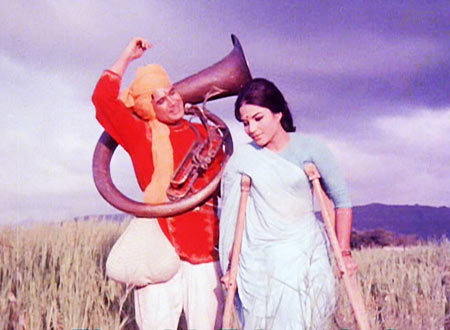
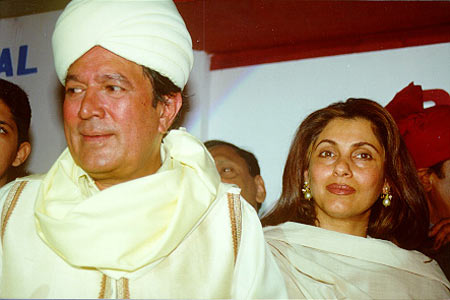
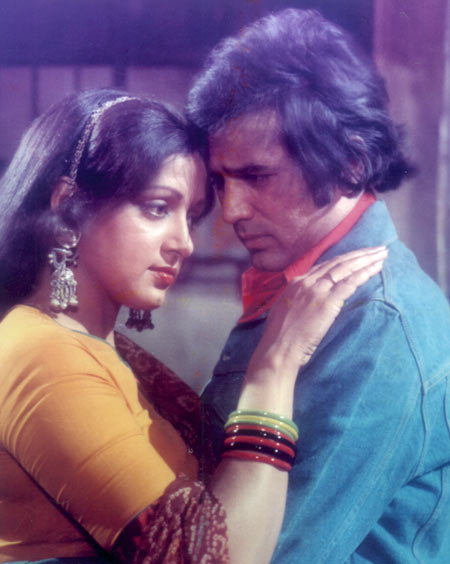

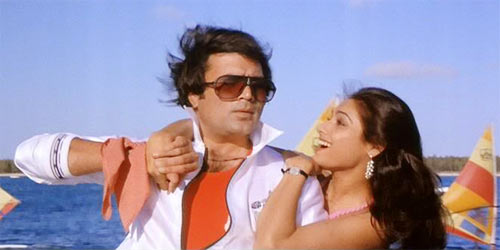
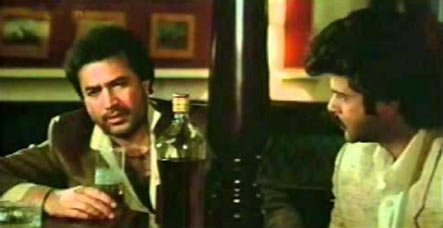

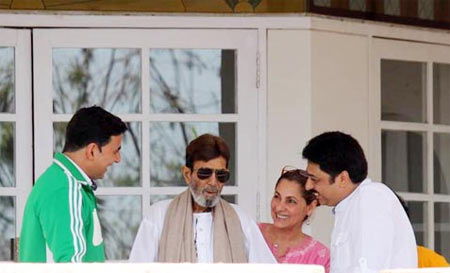
Comment
article